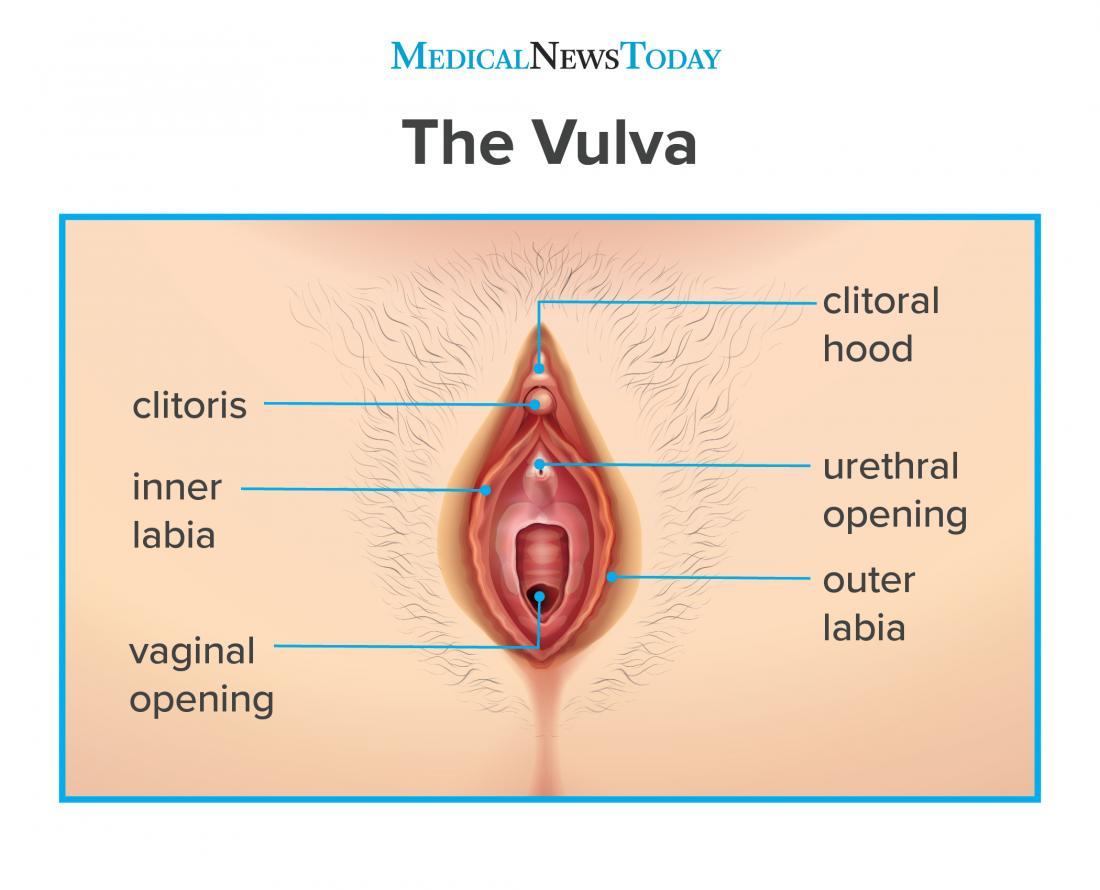The clitoral hood is the fold of skin that surrounds the head of the clitoris. The hood protects it from friction or rubbing. The clitoral hood varies widely in appearance from person to person.
The article will discuss the clitoral hood, including its appearance, how to find it, and what function it plays. If a person is not happy with how their clitoral hood looks, surgery is an option. We discuss the benefits, risks, and process of surgery here.
The vulva describes the whole external female genitalia. It contains the labia, the opening of the vagina, the opening of the urethra, and the clitoris.
There are two sets of labia, which are the folds of skin that run from the opening of the vagina at the back to the clitoris at the front:
- The labia majora, or the outer lips, are fleshy and usually covered in pubic hair.
- The labia minora, or inner lips, are inside the outer lips.
The clitoral hood is the small flap of skin at the point where the inner lips meet. The clitoral hood surrounds and protects the sensitive tip of the clitoris.
The clitoris is the main pleasure center in female sexuality and has thousands of nerve endings. Clitorises vary in size but are usually around the size of a pea. Only the tip is visible, but the shaft has two parts that extend into the body, down both sides of the vagina, by as much as 5 inches.

The clitoral hood looks like a fold of skin that is connected to the inner lips at the front of the vulva.
No two clitoral hoods look the same. Some are larger, and some are smaller, and what it looks like will, to a certain extent, depend on what the labia look like.
The width the outer lips can vary from one-quarter inch to more than 2 inches, and some people will have lips that are unequal in size. The inner lips, which meet to form the outer hood, can extend down past the outer lips.
The clitoral hood surrounds and protects the tip of the clitoris.
The clitoris has no function in reproduction but is the main pleasure center for females during sex. It has more nerve endings than anywhere else in the body. When stimulated, it fills with blood and becomes erect.
The clitoral hood protects this sensitive gland from friction, or constant rubbing, in everyday life.
There are no rights and wrongs when it comes to how the genitals look. However, if a person is uncomfortable with the appearance of their genitals or if they cause problems in daily life, they can opt for surgery. This includes clitoral hood reduction.
Cosmetic surgeons often perform a clitoral hood reduction along with a labiaplasty, where they reduce the size of the outer lips. During the procedure, the surgeon removes any excess folds in the clitoral hood. They will then close the wound, usually with dissolvable stitches.
Risks
Any surgery comes with risks, including bleeding and infection. To reduce the risk of side effects, experts advise women considering any form of vaginal cosmetic surgery to research their chosen surgeon thoroughly before going ahead.
The other potential side effects of clitoral hood reduction include:
Nerve damage
Because of the high number of nerve endings in the female genital area, there is a risk that they may become damaged during an operation. This can lead to too much sensation (hypersensation) or a lack of sensation (hyposensation). Nerves do not regenerate, so any damage done during an operation is permanent.
Scarring
Scarring could lead to a loss of sensation.
Urine retention
Another potential side effect of vaginal rejuvenation is urine retention, which may occur if scar tissue or labia fusion blocks the urethra. This can seriously damage the kidneys and requires immediate medical attention.
Recovery
The time it takes to recover from a clitoral hood reduction varies. If the person has also had a labiaplasty, recovery tends to take longer.
The surgeon will often advise the person not to lift anything for some weeks after the operation. This will help prevent excessive bleeding and make infection less likely. The doctor will also encourage people to avoid sex during this recovery period.
The clitoral hood is the fold of skin where the inner labia lips meet at the front of the vulva. It sits over the clitoris, protecting the sensitive gland from friction.
Some females choose to have a clitoral hood reduction operation for cosmetic reasons and, as with all surgical procedures, it carries risk. People who are considering the surgery should choose their surgeon carefully before going ahead.
